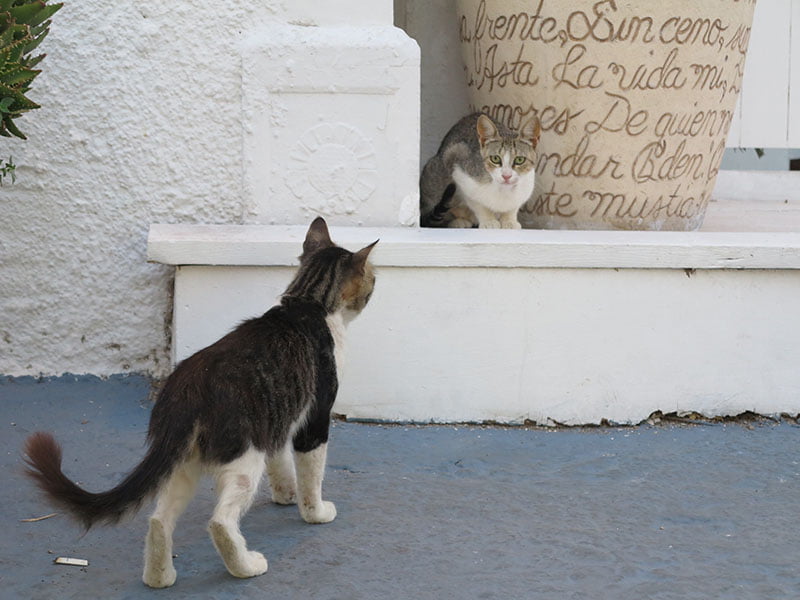NO ANIMAL LEFT BEHIND
How will you know which animals have been neutered after you have put them back?
And how will the local authorities know that they are part of a control programme?
Identification of dogs
For control of a dog population to be effective, it must be possible to identify each dog after neutering.
There are various methods available which vary in how reliable, permanent, visible and easy to apply they are.
Microchipping – This is the best method to use. A microchip can be implanted easily and with minimal discomfort. The unique number is logged on to a database that also records the details of the animal and its owner. However, this method only works if there is a reliable and accessible computerised database available and if enough people have a suitable scanner which is needed to read the microchip number. Unfortunately, there is no external/visible indicator that the animal is chipped. There is also a small risk of the microchip migrating subcutaneously or failing.
A collar with a tag is a simple way of identifying a dog that is used to being handled. However, they can break or be deliberately or accidentally removed.
Ear tags are also a useful identification method, but it is a painful procedure and should be performed under anaesthetic. Handling of the dog is required to read the tag and tags can be deliberately or accidentally removed.
Tattoos in the earflap are also used. This requires specialist equipment and must be done under anaesthesia. The disadvantage of tattoos is that they will fade with time, do not show up well on pigmented skin and are only visible from a short distance.
Earflap-notching can also be used to identify dogs which have been neutered. This must be performed under anaesthesia. Ear notches are not easily visible in long haired dogs and the wounds can be difficult to distinguish from bite wounds and other injuries.
Identification of cats
Ear-tipping is a very clear and effective sign to show that a stray/feral cat has been neutered when viewed from a distance. It is also good for public relations as it is very visible and shows that the cat is part of a managed colony.
Ear-tipping is done by removing 1 cm from the tip of the left ear while the cat is anaesthetised, using forceps to stop bleeding after the cut has been made. Cats show no sign of pain or discomfort after ear-tipping. In some European Union countries there are laws against causing mutilations to animals, but the procedure of ear-tipping has in most cases been exempted, because it is of practical use and prevents the worse situation of a cat being subjected to trapping, anaesthesia and surgery for a second time.
Microchipping – see above for further information. Ear-tipping is not unique to the individual, so it is best to combine it with microchipping to allow each individual cat to be identified. The microchip can be read while the animal is conscious (eg a cat in a trap) but not from a distance which is why it is useful to also ear-tip the cat.
It is more useful to insert a microchip for individual identification
HOW WE CAN HELP YOU
Advice
SNIP International was founded in 1996, and ever since, we have accumulated our knowledge base on animal welfare and on TNR. The small but dedicated team of SNIPi volunteer trustees are all experts in their fields, willing to transmit their knowledge for the benefit of animals.
We have gathered a lot of practical advice in our FAQ section, with links to sources of further information. If needed, you can contact us for non-urgent advice, and the SNIPi team members will reply to you within their possibilities (time constraints).
Connections
Having worked with animal welfare groups all over the world for a long time, we know many of them. Please check FAQ / Useful links and if necessary, contact us by email.
TNR Grants
Between 1996 and 2024, SNIP International distributed over 2,300 pieces of equipment to 96 countries, benefiting 681 animal welfare groups worldwide.
SNIP International is no longer donating equipment but is now giving out monetary grants to animal welfare organisations to help them in their TNR efforts outside the United Kingdom. Animal welfare organisations can apply for grants worth £ 2,000 each. The next application deadline is 30 September 2025.
For more information, please visit our grant page








